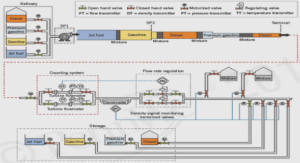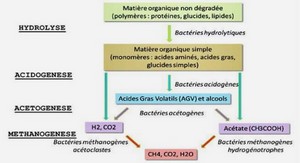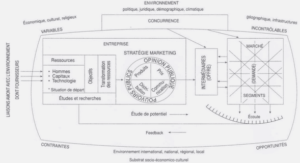Influence of polysaccharide-cement interactions on the fresh state properties of mortar
Freshly-mixed mortars properties
For a given formulation (i.e. kind and dosage of admixture), freshly-mixed mortars properties (i.e. water retention and rheological properties) and pore solution viscosity were determined on the same mortar which have been divided into three parts. Each test was repeated in order to ensure the reproducibility of the results. Moreover, the same procedure was performed with a mortar without admixture as a control test.
Preparation of mortars
In the case of pre-dissolved addition, admixtures were previously dissolved in deionized water. Complete dissolution of all polymers was obtained by means of magnetic stirring for 24h. Polymer dosages in mortars varying from 0.1 to 0.66% by weight of cement (bwoc) by preparing polymer solutions of concentrations ranging from 1 to 6.66 g.L-1 . Mortars were then prepared according to the following mixture proportions: 30 wt.% of cement, 65 wt.% of siliceous sand (DU 0.1/0.35, Sibelco) and 5 wt.% of limestone filler (BL 200, Omya). Particle size distribution of the solid phases was determined employing a laser-based particle size analyzer with dry powder disperser (Mastersizer 2000 equipped with Scirocco dispersing unit, Malvern). The median particle diameter by volume (D50%) are about 310, 12 and 6 µm for the sand, cement and filler respectively. Dry mixture (i.e. cement, sand, filler, and polymer in the case of dry addition) was homogenized in a shaker (Turbula, Wab) for 15 min. Deionized water or admixture solution, according to the method of polymer introduction, was then added to the dry mixture in order to obtain a water to cement ratio W/C = 1. Mortars were mixed (MIx40, CAD Instruments) in accordance with EN 196-1 [36]. It is worth mentioning that the mortars formulation with high W/C was adapted from the CEReM (European consortium for study and research on mortars) mixture design [2,3]. This work is indeed a part of a larger study that focuses on the influence of HPG on overall mortar properties at the fresh state. Moreover, regarding water retention, high W/C ratio corresponds to extreme conditions which are useful to highlight the effectiveness of HPG as water retention agent. Chapitre V 184
Water retention measurements
Different tests, based on a measurement of the removed water after suction or depression, allow measuring the water retention capacity of freshly-mixed mortar [3]. The test specified in the ASTM C1506-09 standard [37] was performed 15 min after mixing in order to measure the water loss of mortar under depression. The standardized apparatus was submitted to a vacuum of 50 mm of mercury for 15 min. Then, water retention capacity, noted WR, was calculated using the following equation: (%) 100 0 0 1 W W W WR (1) where W0 represents the initial mass of mixing water; W1 is the loss of water mass after aspiration.
Mortars rheological properties
The method used to investigate the fresh mortars rheological properties was well detailed in a previous study [25]. Briefly, a vane-cylinder geometry was employed with the gap thickness, distance between the periphery of the vane tool and the outer cylinder, of 8.5 mm. The calibration was performed with glycerol, following the Couette analogy [38,39]. The mortar was introduced into the measurement system at the end of the mixing. The suspension was then held at rest for 6 min. 10 min after the contact between cement and water, the mortar was pre-sheared for 30 s at 100 s-1 in order to re-homogenize the sample and to clear its flow history. After a period of rest of 4.5 min, the rheological measurements were started, i.e. at the age of 15 min. Imposed shear rate was decreased by step from 300 to 0.06 s-1. At each shear rate, the measuring time was adjusted in order to obtain a steady state whatever the formulation [40,41]. Nevertheless, because of sedimentation risk due to high W/C ratio, the samples were systematically sheared at 100 s-1 for 20 s before each imposed shear rate in order to put back in suspension particles of the mortar. This resuspension procedure was validated in [3] and [25]. Finally, the measurement procedure took about 17 min for 16 steps. The results can be expressed as shear stress according to shear rate . Experimental data were fitted well with the Herschel-Bulkley (HB) model [42] (see Fig. 1a), which is often used to describe mortars rheological behavior: n K 0 (2) where 0 is the yield stress, K the consistency coefficient and n the fluidity index which characterizes how shear-thinning the mortar is. In the following, the three HB parameters were thus chosen to compare admixtures to each other.
Pore solution viscosity
At 15 min (i.e. similar to water retention and mortars rheological measurements), a large volume of mortar, in order to have a representative sample, was centrifuged (Thermo Scientific, Sorvall Legend XF) for 10 min at 4,500 rpm. Then, the supernatant was collected and centrifuged again (Eppendrof, MiniSpin Plus) at higher speed (14,500 rpm) for 5 min which allows removing residual particles. The steady shear flow of final supernatant, representing pore solution, has been investigated using decreasing logarithmic ramps in the 103 – 1 s-1 range with cone and plate geometry (2° cone angle, 50 mm diameter). Flow curves exhibited typical shear thinning behavior with a Newtonian region in the low shear rate range [43,44]. Experimental data were well correlated with the Cross model [45] (see Fig. 1b): 1 ( ) )( 0 n (3) where 0 is the zero-shear rate viscosity, ∞ is the infinite rate viscosity, is a relaxation time and n a non-dimensional exponent. Among Cross parameters, the zero-shear rate viscosity represents the constant viscosity in the Newtonian plateau region at low shear rate and was chosen to characterize pore solution viscosity.





